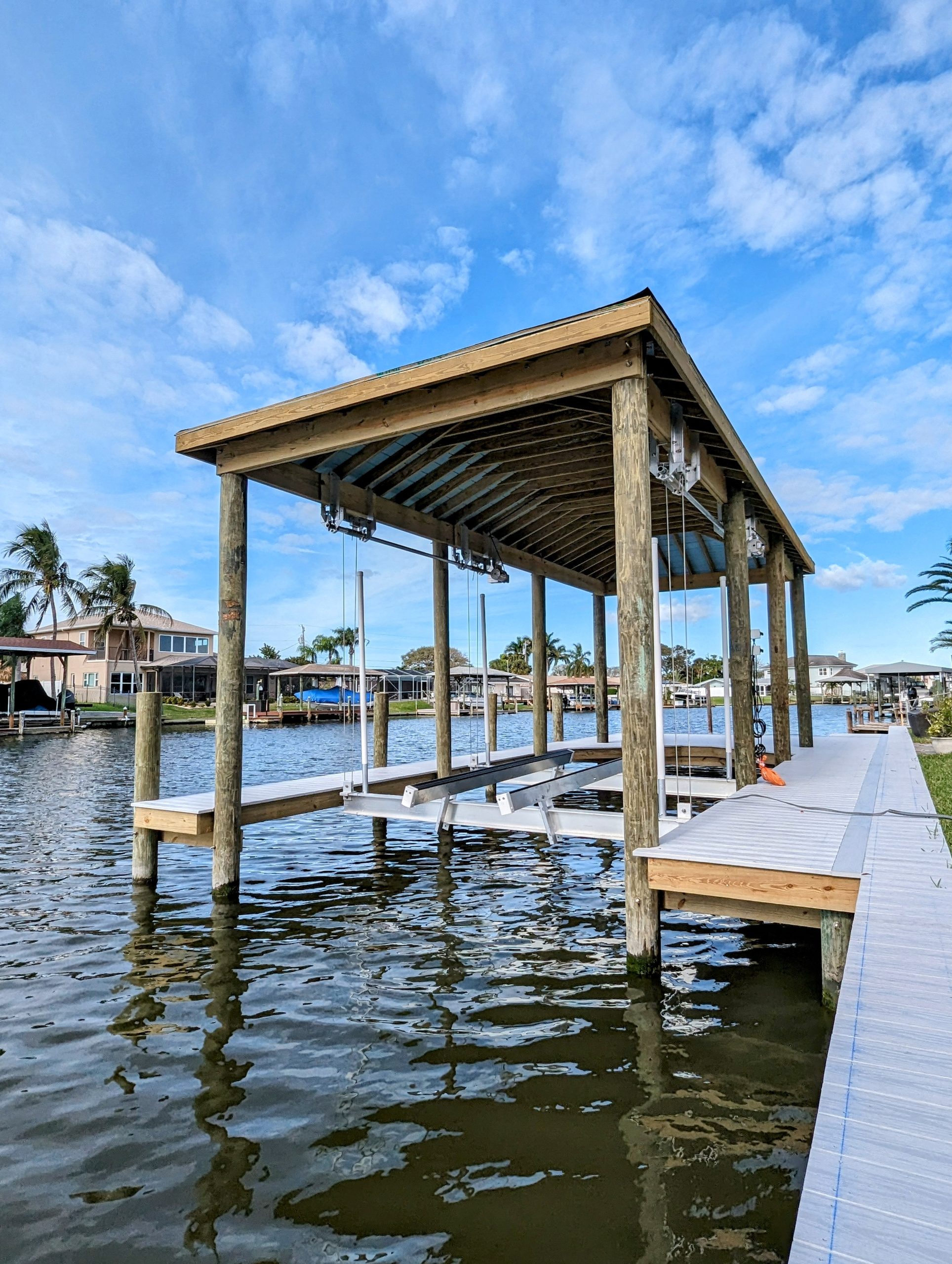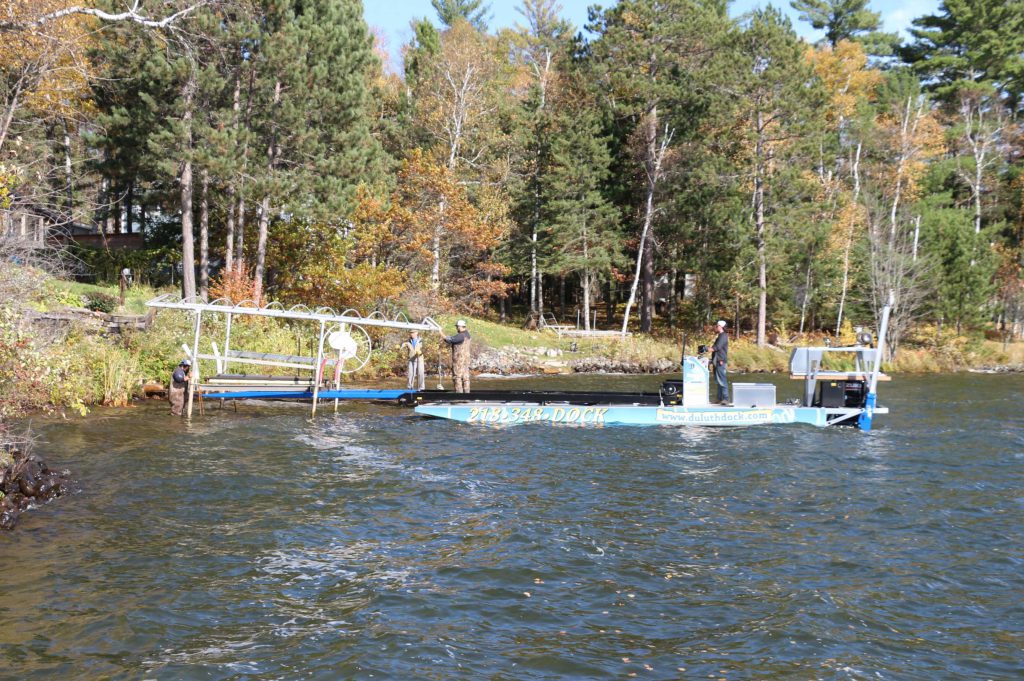How to Address Common Dock Fixing Issues for Safe Water Activities

Identifying Common Dock Issues
Recognizing typical dock problems is crucial for preserving the capability and security of your waterfront home. Normal assessments can help discover issues before they come to be extreme, making certain both the longevity of the dock and the safety of those who use it.
One more common trouble is the degradation of flotation tools. These gadgets are necessary for keeping the dock buoyant, and any damage or leaks can trigger the dock to checklist or sink. Consistently checking for leaks or waterlogged floats can preempt extra considerable concerns.
Additionally, algae and barnacle accumulation on the dock's surface area can produce harmful and unsafe conditions. This biofouling not just poses a danger to customers however can likewise accelerate the wear and tear of the dock materials.
Last but not least, checking for indications of rust on steel parts is important. Corrosion can compromise the integrity of the dock's structure, making it dangerous. By consistently identifying these usual dock problems, you can make certain that your dock continues to be useful and safe for many years to come.
Fixing Rotting Wood
When attending to the issue of deteriorating timber on your dock, it is necessary to act promptly to avoid further damage. Begin by thoroughly checking the entire framework to recognize all influenced areas. Utilize a screwdriver to probe the timber; if it sinks in easily, the timber is likely decomposed and requires immediate attention.
Once determined, remove the decomposed sections making use of a saw or chisel. Make sure to cut back to healthy, solid wood, guaranteeing you get rid of all compromised product. After removal, deal with the continuing to be timber with a timber preservative to stop future rot. This treatment will assist safeguard against wetness, which is the primary reason for wood degeneration.
Following, replace the eliminated sections with marine-grade lumber or pressure-treated timber, which are more immune to water damages. Safeguard the brand-new items with galvanized or stainless-steel bolts to stop corrosion. Additionally, using a water-proof sealant to the new timber can give an additional layer of defense.
Securing Loose Boards
Just how do you guarantee your dock stays secure and practical for all its individuals? One crucial aspect is safeguarding loosened boards, which can or else pose significant dangers. Loosened boards not only raise the threat of stumbling however can likewise endanger the architectural stability of the whole dock.

For reinstallation, use galvanized or stainless steel screws, as these materials use superior resistance to deterioration in marine settings. Make sure the screws are long enough to penetrate deep into the underlying support structure, yet not so lengthy that they stick out through the dock's surface area. Pre-drilling pilot holes can aid stop the wood from splitting.
Last but not least, maintain a regular inspection routine to determine and attend view it to any new problems promptly. By protecting loose boards efficiently, you contribute to the overall security and long life of your dock, making it a reputable system for water tasks.
Stabilizing Unstable Pilings
Guaranteeing the stability of unstable pilings is paramount to preserving a secure and functional dock. Utilize a level to inspect for see page vertical alignment and ensure they are driven deep enough into the substrate to give adequate support.
If the pilings are found to be unsteady, one effective technique for support is the use of additional bracing. Cross-bracing with dealt with lumber or galvanized steel can substantially boost security. Support the braces firmly to both the pilings and the dock frame to disperse lots equally.

Normal upkeep and regular reassessment of the pilings' security are critical to guaranteeing long-lasting dock safety and capability.
Replacing Rusty Equipment
Dealing with unsteady pilings is simply one element of maintaining a dock's stability; another critical problem is changing rustic hardware. Over time, direct exposure to dampness and salt can lead to the oxidation and corrosion of braces, screws, and screws, jeopardizing the whole structure's security. Regular evaluation for rust is necessary, especially after serious weather or seasonal modifications.
When rusty hardware is recognized, instant action is required. Begin by choosing marine-grade stainless steel or galvanized hardware, both made to resist the harsh aquatic atmosphere. Make certain that you have the appropriate devices, such as screwdrivers and wrenches, to securely get rid of the old, rusty items without creating more damages to the dock.
After removing the corroded hardware, thoroughly tidy the affected areas to get rid of any residual rust or particles. Use a rust-inhibiting guide to exposed metal surfaces prior to setting up the brand-new hardware. Tighten all components firmly to stop future helping to loosen, and periodically evaluate the installations to make certain ongoing stability.
Changing rusty hardware not only expands the dock's life-span yet additionally dramatically improves the security of water tasks. By proactively taking care of deterioration, you secure both the structure and its users, making certain a Web Site safe and pleasurable waterfront experience.
Final Thought
Regular evaluations and upkeep are important to resolve usual dock repair service problems and make certain risk-free water tasks. By determining and correcting troubles such as deteriorating wood, loosened boards, unsteady pilings, and corroded equipment, structural security and long life can be substantially improved. The application of suitable treatments and marine-grade products better strengthens the dock against environmental stressors. Such aggressive measures contribute to the overall security and functionality of dock structures, cultivating a protected environment for water-based tasks.
Making sure the safety and security of water tasks hinges considerably on the proper upkeep and repair of anchors (Dock Repairs). These tools are essential for keeping the dock resilient, and any damage or punctures can cause the dock to listing or sink. By routinely recognizing these typical dock problems, you can make sure that your dock stays protected and useful for years to come
Making sure the stability of unstable pilings is paramount to preserving a risk-free and useful dock.Routine assessments and maintenance are essential to attend to typical dock repair work concerns and ensure risk-free water tasks.